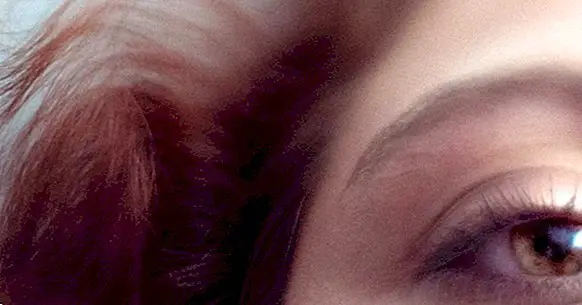Hemianopsia: types, symptoms, causes and treatment
Hemianopsia is one of the neurological alterations that show us to what extent vision is a complex process of functioning . Normally we believe that what we see enters through the eyes in the form of light and is represented in the brain as a unit, after our nervous system has been in charge of unifying the information received in "raw" format.
However, the sense of sight is working from a process that is not limited to collecting data and joining them, but has a much more active role than it seems: composed images that are not really equal to what they capture the eyes.
Actually, the simple fact of having a couple of these sensory organs already makes this necessarily have to be, and hemianopsia helps us understand this . Let's see it
- Related article: "The 15 most frequent neurological disorders"
What is hemianopsia?
As far as we know, vision is one of the most important senses we have, but it is also true that it can fail in many different ways. Hemianopsia is one of them.
As the name suggests, hemianopsia has to do with the hemispheres, or rather, the hemibodies, which are the sides of our body divided by a vertical axis (ie the left or right sides) with respect to our nervous system. In particular, hemianopsia is blindness in relation to one of the sides of the visual field .
In other words, it is not that we do not see through an eye and as a consequence our visual field narrows in the horizontal sense when one of its sides is reduced; is that in one of the two eyes, or in both, one of the two halves of the visual field has ceased to exist
symptom
Hemianopsia may seem unusual and is not as easy to understand as conventional blindness, but in reality it is still a neurological disease that affects vision. Therefore, all its associated symptoms have to do with this kind of problems: Orientation problems, confusion for not finding a space, person or object , feeling of not knowing where you are, etc.
It is also possible that these symptoms are mixed with those of the accident or illness that in turn has caused hemianopsia, which as we will see can be caused by very varied phenomena.
Anyway, these symptoms also depend on the type of hemianopsia in question, because this alteration appears in different ways.
Types
The main types of hemianopsia obey a first fundamental classification: unilateral and bilateral hemianopsia . In the first case, the alteration only affects one of the eyes, while in the second, it manifests itself in the vision that depends on both eyes.
In turn, bilateral hemianopsia can be homonymous, if the affected side in both eyes is the same, or heteronymous , if in each eye the affected side is different: in one it affects the right, and in the other, the left.
Causes
Normally, hemianopsia is caused by lesions caused by traumatisms, cerebral infarcts and tumors , all of them that structurally affect the nervous system.
However, in some cases it may be due to transient phenomena such as the consumption of substances or migraines with aura, which can generate temporary hemianopsies, with remission of symptoms very quickly.
The parts of the nervous system that are usually behind hemianopsia are the optic chiasm or the last stretches of the optic pathways on their way to the thalamus: the optical strips.
Difference with heminegligencia
It is possible to confuse hemianopsia with heminegligencia, a neurological alteration that also has to do with the hemibodies.
The main difference between the two is that in heminegligencia not only the vision is affected , but the experimentation of all the senses.
The second important difference is that in heminegligencia the problem is not technically in the vision itself, but rather in the attention. Sensory data reaches the brain , but they are not processed as if they were relevant: they are "discarded". For that reason, it has been seen that there is a kind of very little notion of what happens in the ignored hemibody although this information does not pass to the conscience and the person believes not to have noticed anything, as has been seen in experiments.
- Perhaps you are interested: "Heminegligencia: patients for whom the left side does not exist"
Treatment
In the case of transient hemianopsia, the intervention is limited to ensuring the welfare of the person until the effects pass. Treatments aimed at intervening in non-transient hemianopsia they are of the neurological rehabilitation type , assuming that full recovery is not likely to occur.
Bibliographic references:
- Adel K. Afifi. (2006). Functional neuroanatomy: Text and atlas. Mexico D.F .: McGraw Hill p. 324.
- Caramazza, A .; Hillis, A. E. (1990). "Spatial representation of words in the brain implied by studies of a unilateral neglect patient". Nature (Letter). 346 (346): pp. 267-269.
- O'Neill, E., O'Connor, J., Brady, J., Reid, I., and Logan, P. (2011). "Prism Therapy and Visual Rehabilitation in Homonymous Visual Field Loss". Optometry and Vision Science, Vol. 88 (2).



















